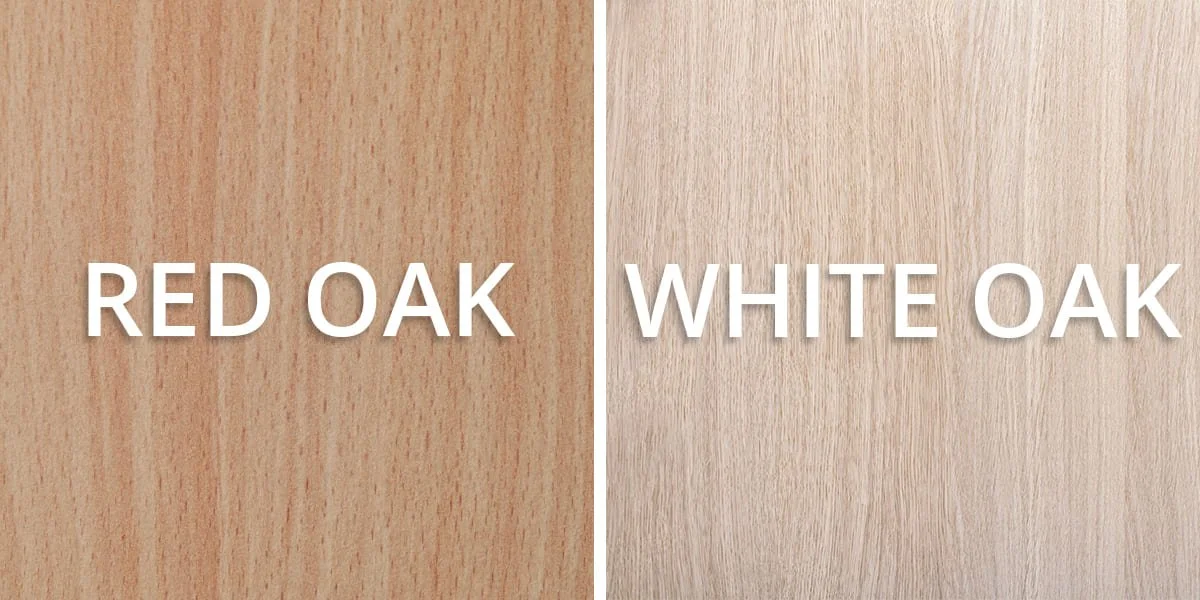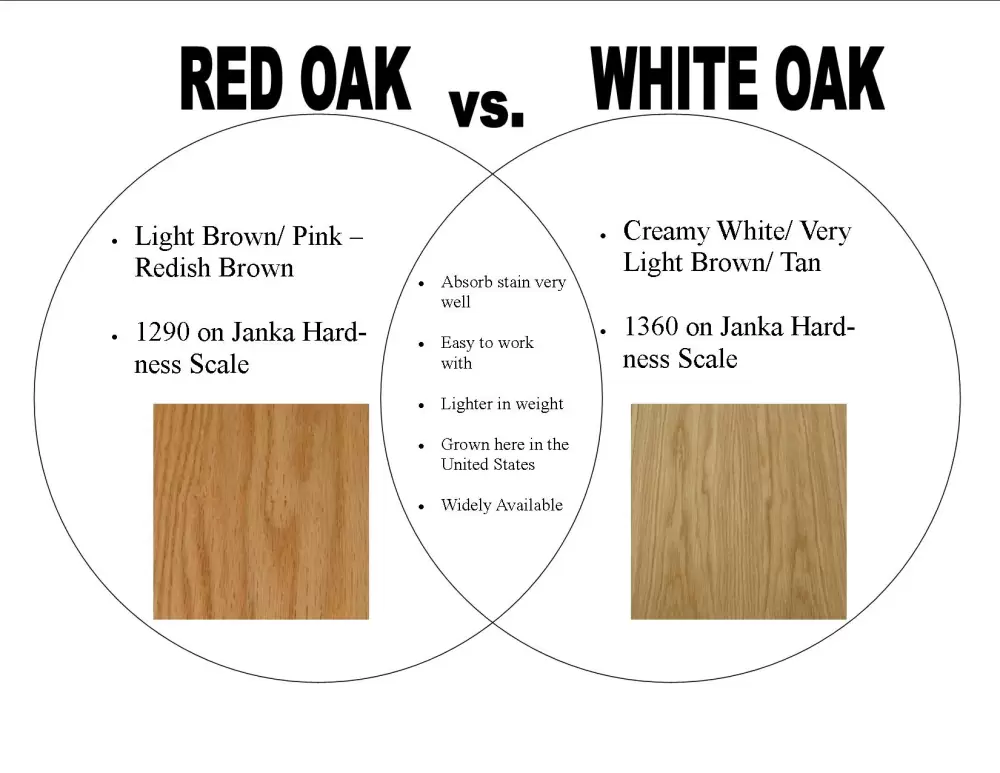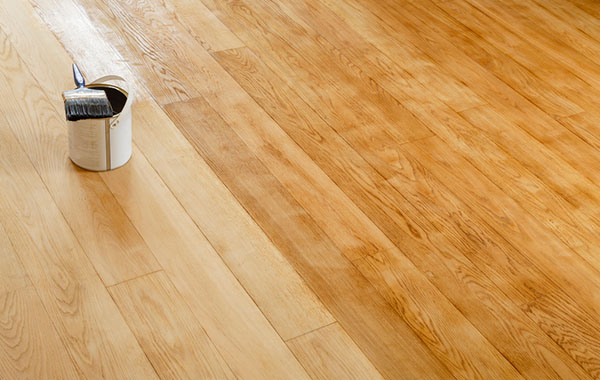When it comes to choosing the perfect flooring for your home, the decision can feel overwhelming. With so many options, how do you find the one that fits your lifestyle and aesthetic?
If you’re considering oak flooring, you’re already on the right track. Oak is known for its durability and timeless appeal. But now you face a crucial decision: White Oak or Red Oak? Each type has its own unique charm and characteristics.
Understanding these can make all the difference in your home’s style and function. Dive into this guide to discover which oak flooring will be your home’s perfect match. Your ideal choice could be just a few paragraphs away, leading you to a more beautiful and comfortable living space.
Characteristics Of White Oak
White oak flooring boasts a tighter grain pattern than red oak, offering a smoother and more uniform appearance. Its natural light to medium brown tone complements various interior styles, adding elegance and warmth to spaces.
When you’re considering flooring options for your home, understanding the characteristics of White Oak can guide you toward making a more informed decision. White Oak is a popular choice for its durability and aesthetic appeal. Let’s explore its unique features to see if it suits your needs.Appearance And Color
White Oak tends to have a more uniform appearance compared to Red Oak. It offers a subtler, neutral color palette with shades ranging from light beige to medium brown. This makes it versatile, allowing it to blend seamlessly with various interior design styles. Imagine walking into a room with White Oak flooring. The natural tones create a calming atmosphere, allowing your furniture and decor to stand out. It’s a blank canvas that lets you express your style.Grain Pattern
The grain pattern of White Oak is generally straight, with longer rays than Red Oak, creating a cleaner look. This characteristic provides a sleek and elegant appearance, ideal for modern and minimalist aesthetics. Think about how the straight grain can make a room feel more expansive. It draws the eye across the space, enhancing the sense of openness. Have you ever noticed how certain wood patterns can make a room feel cluttered? White Oak avoids that pitfall.Durability And Hardness
White Oak scores high on the Janka hardness test, making it more resistant to dents and scratches than many other wood types. This robustness makes it a great option for high-traffic areas in your home. Consider this: if you have kids or pets, you know the floor takes a beating. White Oak stands up to the challenge, maintaining its beauty over time. Doesn’t it make sense to choose a flooring option that can withstand daily life? Choosing the right flooring can feel overwhelming, but focusing on these characteristics can simplify your decision. White Oak offers a blend of beauty, durability, and versatility that might just make it the perfect fit for your home.
Credit: www.plushardwoodflooring.com
Characteristics Of Red Oak
Red Oak flooring stands out with its distinct features. It’s a popular choice for many homeowners. Its unique characteristics make it a preferred option. Understanding these traits helps in making informed decisions.
Appearance And Color
Red Oak is known for its warm tones. It often showcases pinkish hues. These colors add a cozy feel to any room. Its appearance brightens up spaces. The color can vary slightly based on the cut. This natural variability adds charm. Red Oak is versatile in design.
Grain Pattern
Red Oak has a prominent grain pattern. Its grain is open and visible. This pattern is bold and striking. It adds texture to the flooring. The grain lines are usually straight. Sometimes, they show a wavy form. These patterns enhance aesthetic appeal.
Durability And Hardness
Red Oak ranks high in durability. It withstands daily wear well. Its hardness makes it resilient. It’s less prone to dents and scratches. Perfect for busy households. The solid structure ensures longevity. It maintains its beauty over time.
Cost Considerations
Choosing between white oak and red oak flooring involves several factors. Cost considerations play a crucial role in this decision. Both types of wood have unique cost implications. Understanding these can help homeowners make an informed choice.
Price Differences
White oak flooring is generally more expensive than red oak. The price difference arises due to white oak’s durability and water resistance. Red oak is more abundant, making it cheaper. Budget-conscious buyers might lean towards red oak for its affordability. White oak’s elegance can justify the higher price for some.
Installation Costs
Installation costs vary based on the type of oak. White oak may require more preparation due to its hardness. This can lead to higher installation expenses. Red oak is easier to work with, often reducing labor costs. Some installers charge more for white oak due to its complexity. Homeowners should compare installation quotes before deciding.
Maintenance And Care
Choosing the right type of flooring is just the beginning. To keep your floors looking beautiful and lasting longer, proper maintenance and care are crucial. White oak and red oak flooring each offer unique challenges and benefits when it comes to maintaining their appearance. Understanding how to clean and care for these floors can make a huge difference. Let’s dive into some practical tips and preventative measures that can help you preserve the beauty of your oak flooring.
Cleaning Tips
Regular cleaning is key to maintaining your oak flooring. Use a soft broom or vacuum with a wood floor attachment to remove dirt and debris. Avoid using harsh chemicals; a damp mop with a solution of water and mild soap is often sufficient. Always dry the floor completely to prevent water damage.
Have you ever noticed how some cleaners leave a residue? Opt for products specifically designed for wood floors to avoid this problem. They ensure a clean finish without dulling the shine. Try testing a new cleaner in a small area first to ensure it doesn’t affect the wood’s color.
Preventative Measures
Prevention is better than cure, especially for your flooring. Place mats at entrances to catch dirt before it enters your home. They help in minimizing scratches and reduce the need for frequent cleaning.
Furniture pads are your best friends. They prevent scratches and scuffs when moving furniture. Have you ever accidentally dragged a chair across the floor? The marks it leaves can be frustrating. Pads are an easy fix to avoid such incidents.
Keep your home’s humidity levels in check. Extreme changes can cause wood to expand or contract, leading to gaps or buckling. Consider a humidifier during dry months. It’s a small adjustment that can save your flooring from major issues.
Taking these steps will not only preserve your floors but also protect your investment. How are you caring for your oak flooring? If you’re missing any of these steps, now might be a good time to start. A little attention goes a long way in keeping your floors in top shape.
Environmental Impact
White oak flooring generally has a lower environmental impact compared to red oak. It grows faster and is more abundant. This makes it a more sustainable choice for eco-conscious homeowners.
When choosing between white oak and red oak flooring, considering the environmental impact can guide you towards a more sustainable choice. Hardwood flooring not only enhances your home’s beauty but also affects the planet. By understanding the sustainability and eco-friendly options available, you can make a more informed decision.Sustainability
White oak and red oak are both popular choices for flooring, but how sustainable are they? White oak trees grow at a slower rate compared to red oak, which might suggest a higher environmental cost. However, white oak is more resistant to water damage, making it a durable option that may last longer, reducing the need for replacement. Red oak grows faster and is more abundant, making it a more renewable resource. This abundance means red oak can be harvested with less impact on the environment. If you prioritize quick renewability, red oak could be the better option for your home. Have you ever thought about how the longevity of your flooring choice impacts sustainability? Choosing a material that requires less frequent replacement can be a significant step towards reducing your carbon footprint.Eco-friendly Options
Both white and red oak can be sourced responsibly, but how do you ensure your choice is eco-friendly? Look for certifications like the Forest Stewardship Council (FSC) to ensure the wood is harvested sustainably. This certification assures you that your flooring choice does not contribute to deforestation. Reclaimed wood is another eco-friendly option worth considering. By using reclaimed white or red oak, you give new life to old materials, reducing the demand for new trees. This can be an excellent way to add character to your home while being kind to the planet. Have you considered the finish on your oak flooring? Opt for finishes that are low in volatile organic compounds (VOCs) to reduce indoor air pollution. This choice not only benefits the environment but also creates a healthier home for you and your family. In your quest for the perfect oak flooring, how much does the environmental impact influence your decision? Making eco-conscious choices can lead to a beautiful home that respects the earth.
Credit: www.stair-treads.com
Style And Aesthetic Appeal
White oak flooring offers a subtle, elegant appearance with its light, uniform grain. Red oak flooring brings warmth through its rich, reddish tones and bold grain patterns. Both types enhance spaces with their unique styles and natural beauty.
When choosing between white oak and red oak flooring, style and aesthetic appeal are often the deciding factors for many homeowners. Each type of oak offers distinct visual characteristics that can dramatically change the vibe of your space. Whether you’re going for a modern look or a more traditional feel, understanding the style implications of both can guide you to the right choice.Interior Design Compatibility
White oak is often favored for its subtle and sophisticated appearance. Its smooth grain and neutral tones make it a versatile choice that complements modern and minimalist interiors. If your home features sleek lines and a contemporary aesthetic, white oak can seamlessly blend with your design vision. Red oak, on the other hand, has a more pronounced grain pattern that adds warmth and character. It’s a fantastic option if you are leaning towards a classic, rustic, or traditional interior design. Its rich hues can bring a sense of coziness and charm to your living spaces.Color Matching And Staining
One of the advantages of white oak is its ability to take stain evenly, allowing for a wide range of color options. Whether you want a light, airy finish or a dark, dramatic tone, white oak can accommodate your preferences beautifully. This flexibility makes it a popular choice for those looking to customize their flooring. Red oak naturally has a reddish tint, which can influence your color matching decisions. While it can still be stained in various shades, its inherent color often shines through, affecting the final look. If you love the warm, natural tones, red oak can be perfect for your space, but it might require more consideration if you have specific color schemes in mind. Reflecting on these insights, what style do you envision for your home? Your choice between white oak and red oak can be the defining touch that brings your interior design dreams to life.Pros And Cons
Choosing between white oak and red oak flooring can be a tough decision. Each type of wood has unique benefits and drawbacks. Understanding these can help you make an informed choice. In this section, we explore the pros and cons of both white oak and red oak.
Advantages Of White Oak
White oak has a tight grain pattern. This gives it a smooth appearance. It can hide scratches well, making it durable. The neutral color suits many decor styles. White oak is often used in modern and rustic homes. It resists water better than red oak. This makes it a good choice for kitchens.
Advantages Of Red Oak
Red oak has a prominent grain. This makes it visually interesting. Its natural color is warm and inviting. It can add a cozy feel to a room. Red oak is also more affordable than white oak. This is ideal for budget-conscious homeowners. It sands easily, allowing for refinishing.
Drawbacks Of Each Type
White oak is more expensive than red oak. Its hardness makes it harder to cut. It can be difficult to install without professional help. Red oak is less resistant to moisture. It can warp in damp conditions. Its grain pattern can be too bold for some tastes. Both types may scratch and dent over time.

Credit: twentyandoak.com
Choosing The Right Oak For Your Home
Choosing between white oak and red oak flooring can be tough. Both types offer unique looks and benefits. Your choice depends on various factors and personal tastes.
Factors To Consider
One key factor is the color. White oak has a neutral tone. It ranges from light beige to brown. Red oak has a pinkish hue. It can vary from light creamy shades to dark reddish-brown.
Another important factor is grain pattern. White oak features a straight, subtle grain. Red oak shows a more pronounced, swirling grain pattern. Durability matters too. White oak is slightly harder. It can handle more foot traffic. Red oak is also durable but slightly softer.
Personal Preferences
Your taste plays a big role. If you prefer a classic look, red oak is a great choice. It offers warmth and traditional charm. If you want a modern feel, white oak could be better. Its neutral tones complement contemporary designs.
Consider your home’s decor. Match the oak’s tone with your furniture and walls. Think about the room’s lighting. White oak pairs well with dark interiors. Red oak brightens up spaces with light colors.
Your lifestyle matters too. Families with kids or pets might lean toward white oak. It hides scratches better. Red oak suits those who love a vibrant look. Both types add beauty and value to your home.
Frequently Asked Questions
What Is The Difference In Grain Patterns?
White oak has straighter grains. Red oak shows more swirling patterns. Both have unique looks.
Which Is More Durable, White Or Red Oak?
White oak is slightly harder. Offers better resistance to dents and scratches. Red oak is durable too.
Is White Oak More Expensive Than Red Oak?
White oak generally costs more. Due to its popularity. Prices can vary by region and supplier.
Can I Stain Both White And Red Oak?
Yes, both can be stained. White oak absorbs stain evenly. Red oak may show more grain.
Which Oak Is Better For High Traffic Areas?
White oak is preferable. It withstands wear well. Ideal for busy homes or offices.
Conclusion
Choosing between white oak and red oak flooring? It depends on your style. White oak offers a subtle, modern look. Red oak provides warmth and traditional charm. Both are durable and easy to maintain. Consider the color and grain pattern you prefer.
Remember your home’s existing decor. Each option brings its own unique beauty. Think about your long-term needs. Both choices add value and elegance to your home. Make your decision based on personal taste. Enjoy the timeless appeal of oak flooring.
Your home will shine with either choice.




